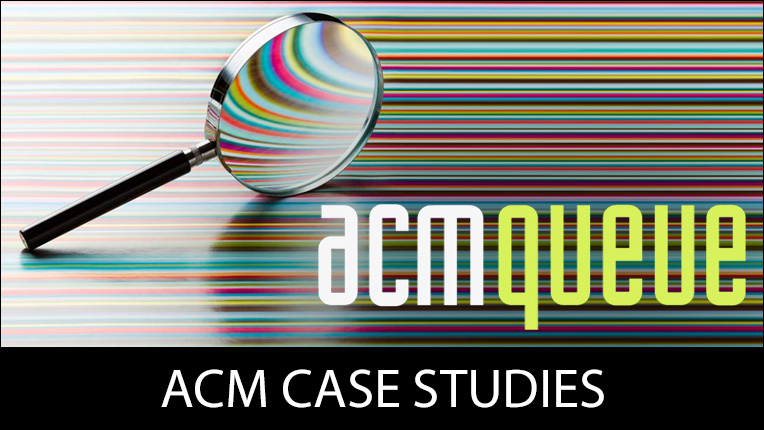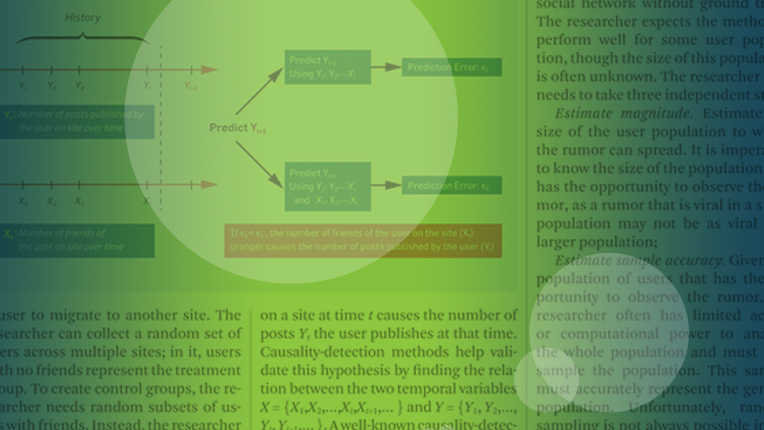SIGDOC FY'04 Annual Report
July 2003 - June 2004
Submitted by: Scott Tilley, SIGDOC Chair
ACM SIGDOC's focus is the design of communication for computer-mediated information products and systems. SIGDOC fosters the study and publication of processes, methods, and technologies for communicating and designing communication artifacts such as printed documents, online text, and hypermedia applications.
FY'04 was my first year as Chair of SIGDOC. It was also a year of transition for the SIG as a whole. Historically, SIGDOC was primarily composed of technical writers. This was reflected in the original meaning of "DOC" in SIGDOC, which was [computer] documentation. More recently, the broader interpretation of "DOC" to refer to all aspects of the design of communication has attracted a more interdisciplinary audience.
Current SIGDOC members include technical communication professionals; software engineers; educators; researchers; Web designers; system developers; computer scientists; information technology professionals; usability specialists; and managers responsible for producing or supervising the creation of communication artifacts. Approximately half of all participants at recent SIGDOC conferences have come from a technical writing group, while the other half have come from software engineering areas.
The 2003 Conference
The annual SIGDOC conference took place October 12-15, 2003 in San Francisco, CA. The conference was a great success, attracting approximately 70 people to the Holiday Inn Financial for engaging discussions and interesting presentations. The technical program was excellent, and the social atmosphere was pleasant. Equally important, the 2003 conference was fiscally sound, creating a small surplus against expenses.
The success of SIGDOC 2003 is due in large part to the efforts of the General Chair, Susan Jones of MIT, and the Program Chair, David Novick of the University of Texas at El Paso. They both worked tirelessly for over a year to make the conference such a wonderful event. The Local Arrangements Chair, Channing Hughes, was instrumental in making us feel welcome in his hometown. The location definitely helped create a social ambiance that supported the collegial atmosphere of all SIGDOC conferences.
The theme of SIGDOC 2003 was "Finding Real-World Solutions for Documentation," with a focus on exploring how theory informs practice and practice informs theory. The conference theme was echoed in many of the papers that were part of the technical program. Presentations were clustered according to the following topics:
-
Building on the User's Experience
-
Formal Methods
-
Field Studies
-
Teamwork in Technical Communication
-
Documentation Tools
-
Understanding Users
-
Managing the Design Process
-
Getting and Giving Information
-
Accessibility
-
Roles of End-Users
Each year, SIGDOC gives out two special awards for prolonged and substantial contribution to the field. The first award, for individual contribution, is called the Rigo award. The second award, for institutional contribution, is called the Diana award.
At SIGDOC 2003, the Rigo award was presented to JoAnn Hackos of Comtech Services, Inc. Dr. Hackos gave a fascinating keynote speech, addressing the very timely topic of outsourcing of increasingly advanced work to offshore service providers. Interestingly, one of the methods she advocated to stave off the loss of jobs due to outsourcing was the adoption of a more engineering approach to technical documentation. Coincidentally, this is the central theme of the SIGDOC 2004 conference (see below).
The winner of the Diana award for 2003 was IBM Corporation. Susan Mills, Director of Corporate User Technologies at IBM, accepted the award. During her presentation, Ms. Mills summarized some of the seminal contributions that IBM has made to technical documentation over the years. For example, the development of GML (a precursor to XML), supporting John Carroll's work on minimalism, and recent innovation in the area of document repurposing via DITA XML.
At SIGDOC 2003 we also selected and announced the award winners for our Graduate Student Competition and our Undergraduate Scholarship Program.
Proceedings from the conference were published by ACM Press.
SIGDOC News and Status
At the March 2004 ACM SIG Governing Board meeting in Chicago, SIGDOC underwent a viability review. I'm delighted to say that SIGDOC was again considered viable for the next four year. This means the next review of the SIG will take place in 2008.
As with many other SIGs, SIGDOC continues to suffer from a slow decline in membership. We have tried to address this decline by revamping the SIGDOC Web site (see below) and pro-actively encouraging potential new members to join the SIG and attend the conference. The new interpretation of the SIG's "DOC" acronym is also an aid in this task, since it helps attract interest from non-traditional sources, such as computer science departments.
The SIGDOC Journal "JCD" ceased publication in Spring 2003 (during the previous fiscal year). At this point in time, JCD continues to be on hiatus. Plans for reviving JCD are under discussion. However, for this to happen, a new editorial board would have to be constituted. Alternatives, such as enhancing the online newsletter (see below), or possibly partnering with one of the other SIGs to create a new journal, are also options being considered.
A new Web site for SIGDOC went online: www.sigdoc.org (also available at www.acm.org/sigdoc). The revised Web site has up-to-date content about the SIG, member benefits, and links to events such as the annual conference. Response to the new Web site has been very positive.
In the past, formatting issues due to corruption caused by the list server plagued the SIGDOC Newsletter. Now, the SIGDOC Newsletter is completely online, which alleviates this formatting problem. It also helps SIGDOC preserve the history of the SIGDOC in an archival manner. Past issues of the newsletter will be placed online over time.
SIGDOC's fiscal status remains sound. However, the drop in membership, coupled with the lower number of participants at the annual conference, continue to force the SIGDOC's Executive Board to carefully manage our finances in a prudent manner.
Looking Forward to 2004
Planning for the 2004 annual conference is nearly complete. The theme of SIGDOC 2004 is "The Engineering of Quality Documentation." The engineering of quality documentation is a cross-disciplinary challenge affecting all team members, including technical writers, graphic artists, software developers, usability experts, and project managers. As the field of documentation matures, we would like to consider the implications of making design a systematic process of specification, creation, management, and evolution--in short, an engineering approach.
The technical program for SIGDOC 2004 is being finalized. We received a tremendous response to the Call for Papers, which gives the Program Committee some latitude in stewarding only high-quality papers through the review and publication process.
More information about SIGDOC 2004 can be found online at www.sigdoc.org.
ACM Case Studies
Written by leading domain experts for software engineers, ACM Case Studies provide an in-depth look at how software teams overcome specific challenges by implementing new technologies, adopting new practices, or a combination of both. Often through first-hand accounts, these pieces explore what the challenges were, the tools and techniques that were used to combat them, and the solution that was achieved.

Lifelong Learning
ACM offers lifelong learning resources including online books and courses from Skillsoft, TechTalks on the hottest topics in computing and IT, and more.

Publish with ACM
ACM's prestigious conferences and journals seek top-quality papers in all areas of computing and IT. It is now easier than ever to find the most appropriate venue for your research and publish with ACM.
